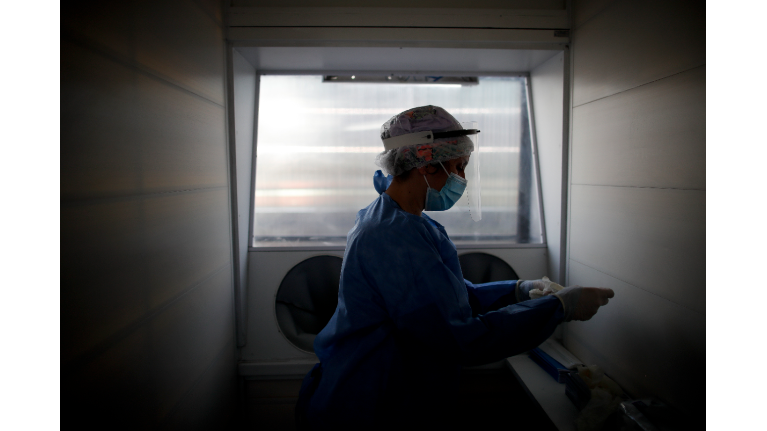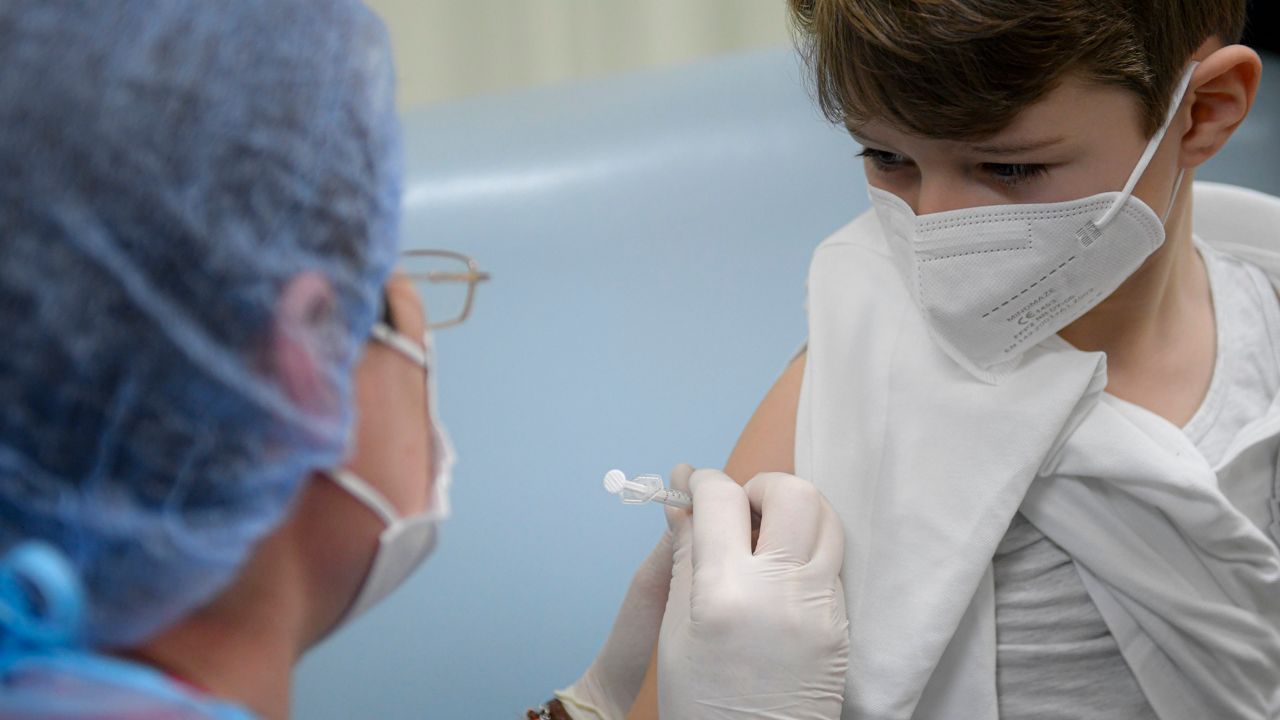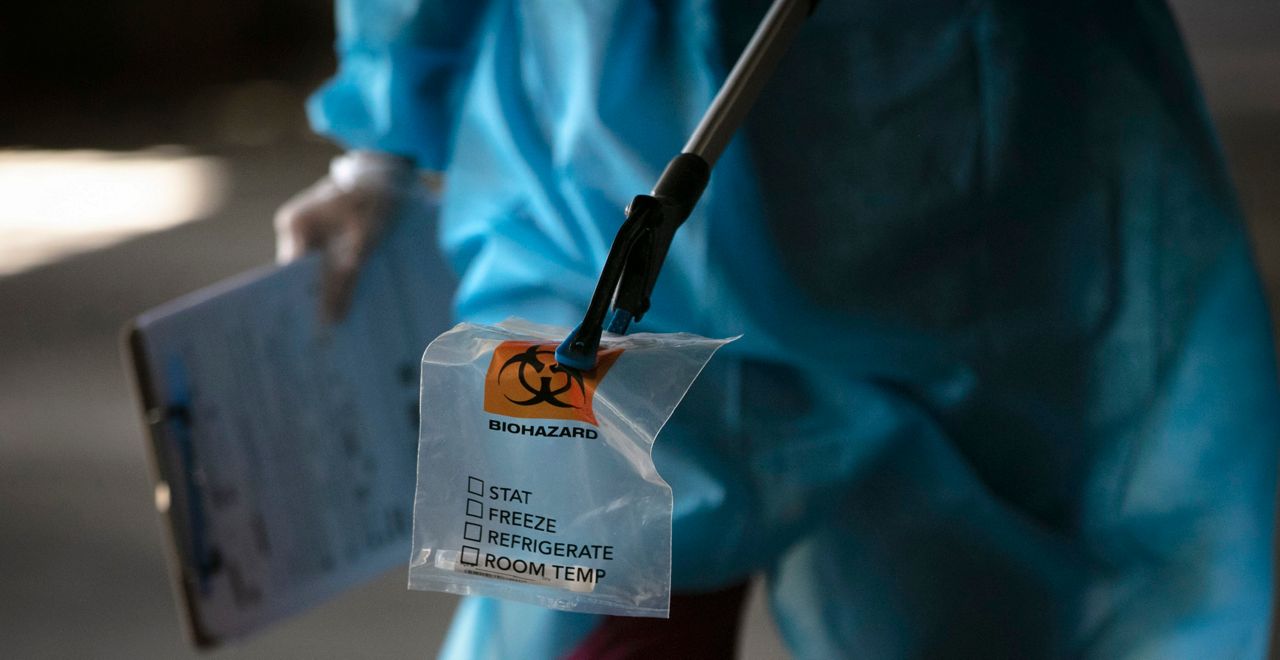MILWAUKEE (SPECTRUM NEWS) — It was another record-shattering week for Wisconsin.
On Friday, one week after the state first surpassed 6,000 daily cases, it set a new high with 7,777 infections. Cases are increasing at exponential rates; the White House coronavirus task force referred to the steep uptick as an “unrelenting rise.”
But overall case numbers don’t tell the whole story of the current crisis. Here, we dive into some of the other concerning metrics around Wisconsin’s COVID-19 spread.
Most counties have “critically high” COVID-19 activity
The DHS has for months been tracking case activity levels in different parts of the state, rating counties on a scale from “low” to “very high.”
Recently, though, that scale hasn’t been enough to fully capture the pandemic’s heights. The DHS added a new, “critically high” category on Wednesday — and immediately placed 65 of Wisconsin’s 72 counties in this upper tier.
“COVID-19 is everywhere in our state,” DHS Deputy Secretary Julie Willems Van Dijk said in a Thursday briefing. “It is bad everywhere, and it is getting worse everywhere.”
As #COVID19 cases continue to surge, @DHSWI today added a “Critically High” Category and other information to our Disease Activity Dashboard to show the Impact of the virus in our state & other information. Learn more: https://t.co/01HJk8xbx3 #YouStopTheSpread pic.twitter.com/JRMYZeP9M8
— WIDeptHealthServices (@DHSWI) November 11, 2020
The case activity level measures the number of new infections reported over the past two weeks per 100,000 residents in the county.
To reach the new “critically high” level, counties need to have added 1,000 cases per 100,000 residents. That’s nearly three times as many as the “very high” level.
And even then, many counties are seeing rates way above this new, higher standard: Dodge, Juneau, Jackson, Waushara, Barron, Chippewa counties all had over 2,000 cases per 100,000, or double the “critically high” level. Menominee County had nearly 3,000, or almost triple.
These activity levels don’t appear to be going down anytime soon, either. In all of Wisconsin, COVID-19 case rates increased by 24% over the past two weeks, the DHS reports.
Deaths could double by the end of the year
As of Friday, 2,573 Wisconsinites had lost their lives to COVID-19 since the start of the pandemic.
If current trends continue, the state is on track to double that number by the time 2021 arrives, according to a model from the Institute for Health Metrics and Evaluation at the University of Washington.
Per that estimate, Wisconsin could see around 5,500 deaths by Jan. 1 if there are no significant changes in behavior. With universal mask-wearing, the death toll would drop to more like 4,900; if restrictions are eased, though, the number would rise above 7,000, according to the model.
“The science is clear, folks,” Evers said at Thursday’s briefing. “If we don’t act now, and if we don’t treat this pandemic like the urgent crisis it is, Wisconsin could lose thousands more friends, family, loved ones, and fellow Wisconsinites by the end of the year.”
When Wisconsin’s positive cases first started to rise in the fall, hospitalizations and deaths didn’t shoot up as quickly.
In part, this may have been because cases were concentrated among younger residents who were less likely to face severe symptoms. Deaths and hospital stays also tend to be lagging indicators, trailing a couple weeks behind cases, since it takes some time for people to develop severe symptoms or pass away from COVID-19.
Now, though, that trend has changed, as Wisconsin’s COVID-19 deaths have also risen dramatically. As of Friday, the seven-day average for reported deaths stood at 45, after several recent record-breaking days.
Two months ago, that daily average was six deaths.
Hospitals are stretched super thin
On Tuesday, the Mayo Clinic Health System reported that among its hospitals in Northwest Wisconsin, every bed was full.
“We are pleading for everyone’s help to wear a mask and follow all public health guidelines to limit the spread of this disease,” Mayo Clinic leaders said in a statement.
Around half of intensive care beds and 40% of medical surgical beds were taken up by COVID-19 patients, they reported.
Across the state, Wisconsin’s hospitals were at 89% capacity as of Friday, the DHS reported, with more than 2,000 COVID-19 patients hospitalized across the state. The Southeast and Fox Valley regions were hardest hit: Both had 93% of hospital beds full.
And the Alternate Care Facility at State Fair Park — which state officials said was created as the “ultimate insurance plan” for hospital surges — is treating more patients than ever, reporting 15 Wisconsinites in its care as of Friday.
Beyond just bed availability, many healthcare providers are also struggling to maintain their staff levels as workers are contracting COVID-19 or getting sent into quarantine. This week, the Mayo Clinic reported around 300 of its Northwest Wisconsin staff were restricted from working due to COVID-19 exposures.
And even for those workers who aren’t sick or quarantined, these current surges are taking a big toll.
“It’s heartbreaking to care for patients struggling with this terrible disease,” Chief Nursing Officer Pam White said in a Mayo Clinic video message. “We’re only human, and this pandemic has been physically, emotionally, and mentally exhausting.”








